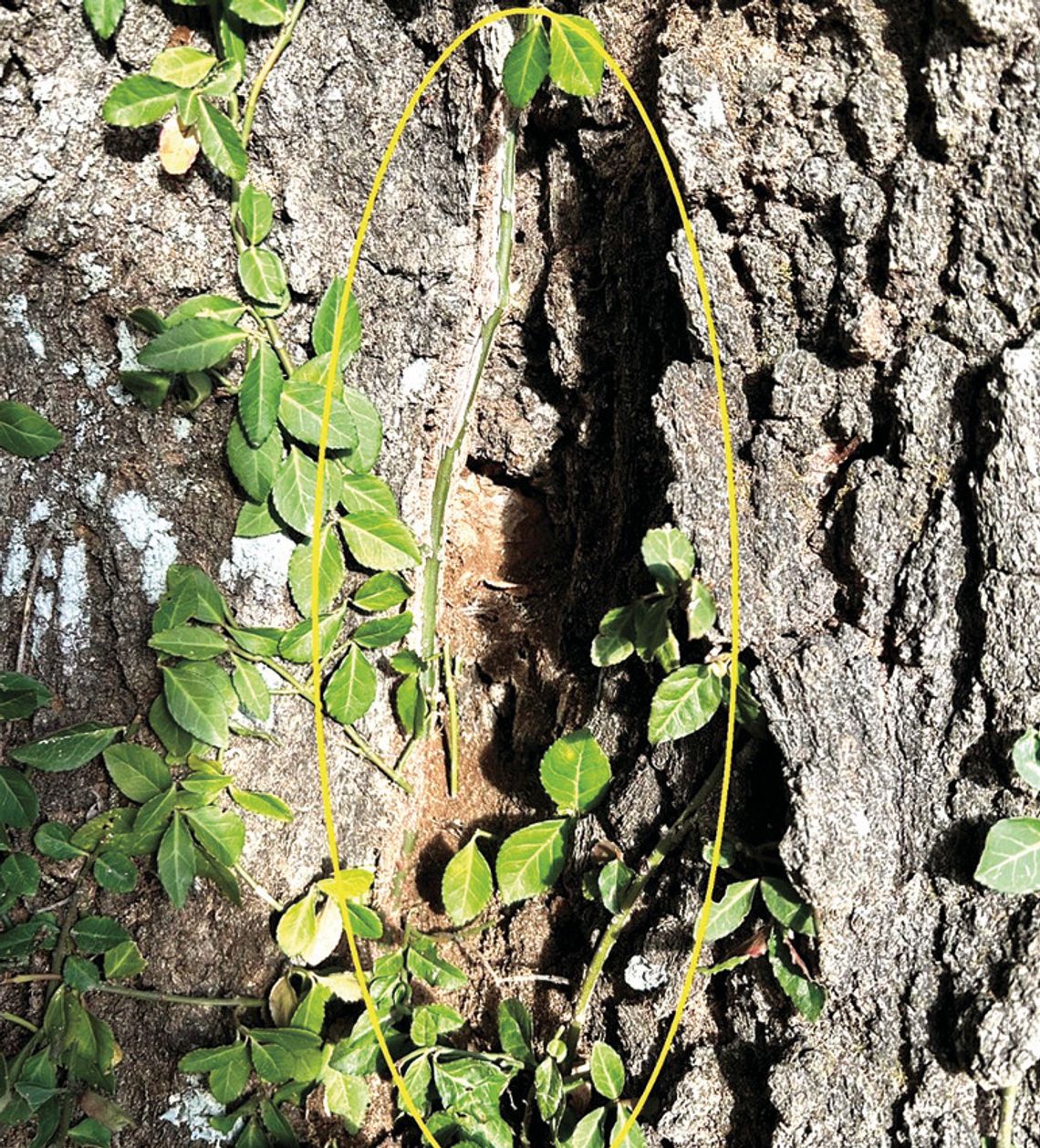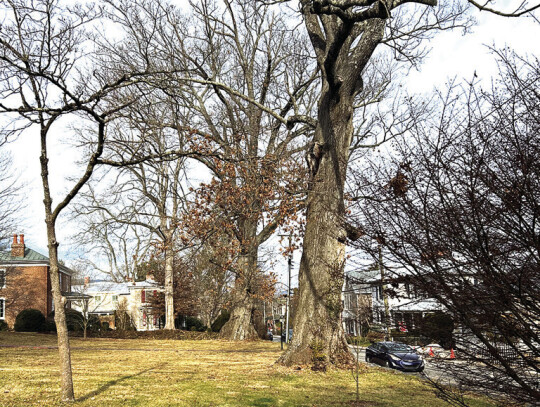At its January meeting, the Lexington Tree Board heard arguments both for and against the removal of two historic trees on private property on White Street.
Arthur Bartenstein purchased 104 White St. in 2019, and has become increasingly concerned about the condition of the two oak trees in front of the property.
Though Bartenstein had both trees treated for bacterial infection and removed dead limbs and potentially competing growth, the health of the two large Shumard Oak trees did not improve.
“There’s clear evidence of decline with these trees, loss of major limbs, both that I’ve witnessed and clear evidence of limbs having fallen from the trees. Accelerating dieback — a third of the canopy is now dead, and this has increased since I’ve owner the property,” Bartenstein told the board.
“There’s fungal growth at base, initially diagnosed as bacterial leaf scorch, this is what Bartlett [Tree Experts] initially told me. This is an incurable disease and was what hit the trees in the cemetery,” he said.
Bartenstein had the trees reassessed over the summer, and both were determined to be potentially hazardous.
“I got a professional arborist to do an evaluation of these trees, a tree risk assessment report, prepared by an ICA board certified master arborist,” Bartenstein said.
“His report, this came last fall, concluded for tree one, ‘the likelihood that this tree falls, due to decay in its lower main stem, is probable for the three-year time frame of this assessment. I recommend you remove this tree as soon as possible, to avoid property damage, injury, and/or death, that may occur in a whole tree failure event.’” The same conclusion was reached for the second oak tree.
Due to their size and placement, both trees are likely to cause significant damage if they fall, he said.
“Those trees are leaning, towards the street, towards the power lines, towards the neighbor’s home across the street,” Bartenstein said.
However, neighbors, including Leon Johenning, who spoke at the meeting, have expressed concern about the removal of the trees.
“They’ve been there for 200 years; there are whole families of squirrels that live in and on and are fed by those trees. We don’t know when they’re going to fall down. Let’s say they’re 200 years old and maybe they’re only at half-life — I think they’re a living entity,” Johenning told the board.
“I think removing the trees is, you’re being entirely too concerned about the results of not removing them,” he said. “I think [Bartenstein]’s being entirely too conservative to go along with removing something that’s been there for 200 years. The viewscape will be totally different.”
Bartenstein also expressed regret about the removal of the trees, but believes the potential damage to surrounding property makes it necessary.
“What can I do apart from taking these magnificent trees out? Which is really, the last thing I want to do, but given the risk involved, it would be unconscionable for me not to take some steps here,” he said.
He presented the board with his plans to plant more trees once the oaks have been removed: six American Hornbeams (a smaller deciduous tree) in a line where the current oak trees are, and two more oaks of the same species, spaced back from the street.
While the Tree Board does not have the authority to make binding recommendations, members expressed support for Bartenstein’s plans on removal and reconciliation.
“This is something that happens, and we generally rely on the assessments of professional arborists to say, ‘This tree is going to fall at some point in the future.’ We recommend removing it before that happens,” said Janice Friend, board chair.
“Even though we all love trees, sometimes this is the best choice available,” she said.
Bartenstein told The News-Gazette that he is in contact with Big O Tree Services on the removal of the oaks, and has the new trees tagged at Bremo Tree Nursery.
.jpg)




